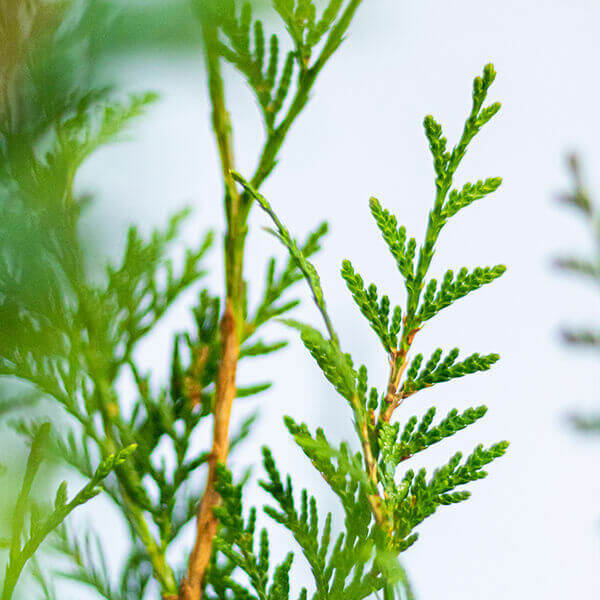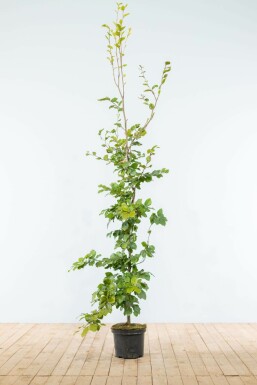Best Hedging Plants For Full Sun
Best Hedging Plants For Full Sun
Blog Article
Best Hedging Plants For Spring Blooms
Improve your garden's allure with lavish hedge varieties such as Yew (Taxus), Thuja, Laurel, Photinia, and Bamboo, commemorated for their structural integrity and environmental advantages.
Yew and Thuja provide evergreen protection and winter season durability, while Laurel uses rapid growth and broad, aromatic leaves.
Photinia adds seasonal appeal with its lively red foliage, and Bamboo provides a low-maintenance, tranquil ambiance.
These hedges improve air quality, lower noise, and develop tranquil, private spaces.
Appropriate planting, spacing, and upkeep ensure energetic development and environmental consistency.
Explore how these lavish varieties can elevate your garden's charm and wellness.
Secret Takeaways
Change Your Garden With Lush Hedge Varieties
- Select Yew for its thick, evergreen development and unrivaled durability.
- Go with Laurel for its quick growth and broad leaves, guaranteeing fast personal privacy.
- Choose Photinia for its vibrant seasonal foliage, which turns a striking dark red.
- Use Bamboo for a low-maintenance, winter-hardy hedge with visual appeal.
- Area plants 2-3 per meter and prune regularly for ideal development and health.
Popular Hedge Plants
When changing a garden with lush hedge varieties, it's vital to think about popular hedge plants such as Yew, Thuja, Laurel, and Photinia due to their unique characteristics and advantages.
Yew (Taxus) is extremely respected for its durability and thick, green development, making it a prime option for sustaining landscapes.
Thuja is kept in mind for its evergreen foliage and robust winter season strength.
Photinia includes seasonal vibrancy with red leaves that darken gradually, developing vibrant visual appeal.
Laurel uses quick growth and fragrant, broad leaves, ideal for quick personal privacy.
In Addition, Bamboo is an exceptional option for atmosphere, offering a low-maintenance, winter-hardy option that boosts the garden's visual with its sophisticated, swaying walking sticks.
These selections cater to a range of horticultural requirements and preferences.
Benefits of Garden Hedges
Garden hedges use a wide variety of benefits, making them a valuable addition to any landscape. These natural barriers are cost-effective to carry out and offer significant wind protection, boosting air flow and contributing to sound reduction. The thick foliage of hedges like Thuja and Beech guarantees privacy by blocking exposure, creating a secluded and tranquil environment.
Hedges likewise play a vital function in microclimate guideline, offering a steady environment that promotes plant development and reduces temperature fluctuations. Their detailed leaf structures filter pollutants, enhancing air quality and adding to a healthier garden community.
Additionally, hedges master sound decrease, taking in and deflecting acoustic waves to lower ambient noise levels. This double performance of providing both visual and acoustic personal privacy boosts the overall harmony and aesthetic appeal of any garden.
Planting and Maintenance Tips
For a successful hedge, precise preparation of the planting location is vital. Ensure the soil has proper pH and drainage to support strong root development.
Area the plants properly for the chosen species. Water the hedge often throughout its preliminary development stage, changing as needed with seasonal changes.
Implement a systematic pest control and illness avoidance method, utilizing chemical or natural treatments when needed. Routinely examine for aphids, mites, and fungal infections.
Apply mulch to keep moisture and suppress weeds. Seasonal pruning promotes dense growth and air flow, necessary for plant health.
Following these standards will assist you cultivate a dynamic, well-kept hedge that improves the beauty of your garden.
Spacing and Cutting Standards
Spacing and Trimming Guidelines
Proper spacing and cutting are important for cultivating healthy, visually appealing hedges. Adequate spacing ensures each plant gets adequate nutrients, light, and airflow.
Follow these standards for ideal hedge maintenance:
- Spacing: Position hedge plants 2-3 plants per meter to motivate robust growth.
- Pruning Techniques: Routine pruning is vital for maintaining wanted hedge height and shape. Trim new development in summer and cut back older wood throughout winter.
- Seasonal Care: Change trimming schedules and methods according to seasonal requirements to ensure plant health.
- Hedge Height: Frequently screen and trim to keep the preferred hedge height and attain uniform looks.
Following these actions will guarantee your hedge prospers, enhancing both the appeal and functionality of your garden.
Picking the Right Hedge
Choosing the Right Hedge
Choosing the proper hedge involves assessing aspects such as mature height, foliage density, and environmental resilience. Effective hedge plant selection requires comprehending each types' growth qualities and site-specific versatility.
For example, Yew (Taxus) uses exceptional durability and thick growth, while Thuja is noteworthy for its winter strength. Additionally, thinking about upkeep requirements is crucial; fast-growing species like Laurel or Privet demand regular trimming, whereas low-maintenance choices like Bamboo or Ivy may be preferable for those seeking minimal upkeep.
Environmental factors such as soil type, light accessibility, and moisture conditions must also direct the selection process. This careful approach ensures the chosen hedges will flourish, providing both visual and practical benefits to the garden landscape.
Delivery and Planting Advice
To guarantee your hedge plants grow, they need to be provided by specialized couriers and planted quickly upon arrival.
Follow these essential actions for effective planting:
- Soil Preparation: Enhance the soil with raw material to improve drain and nutrient content.
- Planting Depth: Create a trench twice the width and equivalent to the depth of the root ball.
- Watering Strategies: Water thoroughly after planting, keeping the soil consistently wet but not saturated.
- Mulching: Use a layer of mulch to keep moisture and reduce weeds.
Consumer Assistance and Service
Provided the crucial function of timely assistance in horticultural pursuits, our consumer support group is offered six days a week through telephone, e-mail, and social media to use professional suggestions and promptly attend to any concerns. Their commitment to quick reaction times ensures client satisfaction by fixing queries connected to plant health, optimal planting techniques, and upkeep schedules.

-----------------
Six days a week
Within 48 hours
6 days a week
This comprehensive support group, strengthened by a stellar 9.3/ 10 consumer rating, highlights our dedication to improving the gardening experience for every customer.
Frequently Asked Concerns
How Long Does It Consider Hedge Plants to Establish?
Hedge plants normally need one to three years to end up being fully established, with the specific duration differing by species and growing conditions.
Efficient care throughout this crucial duration is essential for robust development. Constant watering, vigilant weed control, and suitable fertilizer application are essential in promoting strong root development.
For instance, fast-growing types like Laurel may establish quicker, while slower-growing varieties such as Yew might take longer. Thorough upkeep speeds up the establishment procedure, resulting in healthy and thick hedges.
What Are the very best Hedge Plants for Privacy?
The question of the very best hedge plants for personal privacy includes evaluating evergreen and deciduous choices.
Evergreen hedges like Thuja, Laurel, and Cypress supply year-round protection, ensuring continuous privacy.
In contrast, deciduous hedges such as Beech provide seasonal personal privacy, shedding leaves in cooler months.
Secret upkeep pointers for privacy hedges include regular trimming, fertilizing in Additional reading spring, and proper spacing-- typically 2 to 3 plants per meter.
Additionally, consistent watering and diligent weed removal are essential for promoting healthy, dense growth.
Can Hedge Plants Attract Wildlife to My Garden?
Yes, hedge plants can attract wildlife to your garden by providing necessary advantages like shelter, food, and nesting websites, therefore boosting local biodiversity. For example, yew, holly, and laurel are excellent for attracting birds, while ivy supports a range of pests.
Nevertheless, it is necessary to note that there are some drawbacks, such as increased upkeep to handle pests and routine maintenance. Thoroughly choosing and preserving hedge varieties can assist balance these disadvantages and benefits, ultimately fostering a sustainable and dynamic ecosystem in your garden.
Exist Any Flowering Hedge Plants Available?
Yes, there are flowering hedge plants readily available that can improve the beauty of your garden.
For instance, Elaeagnus, also called Olive Willow, produces fragrant white flowers in the fall, including a touch of elegance.
Photinia, another popular option, showcases vibrant red leaves that grow into a rich green, developing a dynamic visual impact throughout the seasons.
To ensure these plants prosper, it's important to practice appropriate pruning strategies and seasonal maintenance, such as cutting brand-new growth in the summer season and cutting back in the winter.
These procedures will assist maintain the health and visual appeal of your blooming hedges.
How Do I Prevent Pests in My Hedge Plants?
To avoid pests in hedge plants, utilize natural bug control methods and preserve correct hedge care. Present advantageous bugs like ladybugs, which victimize damaging pests, to create a balanced environment.
Routinely check your hedges for indications of problem and quickly eliminate any afflicted parts to avoid the spread. Make sure the health of your hedges by using well balanced fertilizers and supplying adequate water.
Utilize mulching to retain soil moisture and proper spacing to decrease plant stress and promote robust growth. These practices collectively help in reducing pest issues and maintaining a healthy hedge.
Conclusion
In essence, choosing the right hedge ranges such as Yew, Thuja, and Laurel can change any garden into a serene sanctuary. These plants offer year-round greenery, enhance visual appeal, and deal practical benefits like noise decrease and wind security.
Appropriate planting techniques, accurate spacing, constant watering, and seasonal cutting are important for optimal development.
Reliable shipment services and professional client support make sure a seamless experience from purchase to planting, making it simpler than ever to raise your outdoor area.
Garden hedges provide a wide range of advantages, making them a valuable addition to any landscape. These natural barriers are cost-effective to carry out and offer significant wind security, enhancing air blood circulation and contributing to noise reduction. The thick foliage of hedges like Thuja and Beech guarantees privacy by blocking exposure, developing a secluded and tranquil environment.

Pruning Techniques: Regular pruning is essential for maintaining wanted hedge height and shape. Cut brand-new growth in summer and cut back older wood during winter season.
Report this page